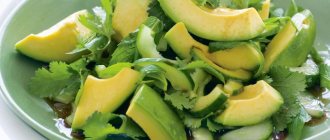Hello, friends. Who better to get advice on proper nutrition from than a professional nutritionist, right?
Today we will find out what Yulia Chekhonina’s diet is based on and why those who are losing weight can actually eat literally everything.
Yulia Chekhonina is well known to viewers of the TV show “Give Yourself Life,” a project for celebrities who want to change their approach to nutrition and physical activity in order to prolong life.
She also took part in the popular show about health and proper nutrition, “About the Most Important Thing,” as well as in other programs, such as this one, where she gave advice on organizing meals and recipes for preparing a healthy breakfast.
They listen to Yulia’s advice - she is a true professional, works at the Nutrition Clinic of the Institute of Nutrition of the Russian Academy of Medical Sciences, is a candidate of medical sciences, and has published more than fifty scientific papers.
She has published several books on weight loss aimed at the general public, including the book “The Slimness Factor. The ideal diet."
So what does it offer?
How to lose weight easily
One of the main rules from Yulia: being slim does not mean being hungry.
You can eat almost anything – even pasta and white bread. But at the same time, make sure that some foods are eaten only at certain times.
It is important that carbohydrates are given a place from morning to 12 o’clock.
Plate rule
Dividing a plate into parts (even mentally, but better yet in reality), placing separate products in each part, was invented a long time ago. Chekhonina brought her own rules to this method.
So, take a plate and divide it into four parts.
- One quarter is a protein dish
- One quarter – carbohydrate food (potatoes or porridge)
- Two quarters – fruits and vegetables
For breakfast, all four parts of the plate are filled.
The rest of the meals – a quarter is empty for carbohydrates.
Secrets of getting slim
In fact, there are no secrets or difficulties in losing weight using Chekhonina’s method. The main thing is to stick to the minimum rules and watch what foods you fill your plate with throughout the day.
In addition, to gain slimness and maintain your new weight, you need to:
- Maintain a balance between calorie intake and expenditure - spending more than you receive.
- Every day include in the menu:
protein – three protein dishes
vegetable soup
fruits – 3-5 pieces.
- Monitor the daily availability of vegetables and natural yoghurts (unsweetened, with a short shelf life).
- Reduce the amount of alcohol, fatty, salty, fried foods and sweets to a minimum.
- Add physical exercise to your daily schedule.
- In addition to meat, the menu for an ideal figure should also include fermented milk products - they supply the body with useful nutrients and help normalize the functioning of the stomach, says the nutritionist.
In general, Julia has a positive attitude towards animal protein, believing that meat (not fatty) is useful not only because of its amino acid composition, but also for weight loss in general, since it takes a lot of energy to digest.
In addition, Julia says that protein dishes are never put aside. Here I cannot agree with her - we should not forget about the dangers of animal products for our body, which I talked about in the article about.
Not only does this food increase the acidity level of the stomach, driving it from a healthy, alkaline environment into an acidic one, which leads to rapid wear and tear of the body and its premature aging.
So it is still “rich” in toxins, antibiotics and other ingredients that it got from industrial meat production. Be careful!
Sample menu for the day
To help you navigate your diet, the doctor offers his approximate version. Based on it, you can create your own menu for the day or week.
- Breakfast
Porridge (buckwheat, oatmeal, you can steam the same buckwheat the night before), omelet, vegetable salad, apple, tea.
- Lunch
Cottage cheese or natural yogurt, tea, fruit.
- Dinner
Vegetable soup, vegetable salad, chicken breast (boiled)
- Snack
Yogurt, or fruit or cottage cheese.
- Dinner
Boiled meat or steamed fish, vegetable salad.
Before bedtime (an hour before) – a glass of fermented milk (kefir)
Should older people become vegetarians?
According to general practitioner and nutritionist Yulia Chekhonina , vegetarianism has no clinically proven advantages over conventional balanced nutrition. But there are risks for the development of deficiency states. For example, vegetarians are more likely to develop a deficiency of a number of B vitamins, vitamin D, calcium, iron, etc. It is extremely difficult to compensate for the deficiency of complete protein with their usual diet (that is, exclusively plant foods). Although soy products (tofu cheese, for example) or soy isolate, as well as pea proteins and other ingredients with which products are enriched for additional nutrition for vegans, will help to do this to some extent. Of all plant products, soy is closest to meat in amino acid composition, however, the selection of functional foods, as well as vitamins and other medications, requires the mandatory intervention of a specialist.
Article on the topic When a child is a vegetarian. An expert on the pros and cons of this diet
Yulia Chekhonina claims that ideally, people of any age need proteins of different origins (60% animal and 40% plant). Despite a number of existing disadvantages, animal proteins are still considered the most complete, because they are closer to our native protein, and therefore are better absorbed.
“The amount of protein in the diet does not depend on age,” says the expert. For healthy people who do not have contraindications (problems with the cardiovascular system and kidneys), the level of protein consumed throughout life should remain unchanged. It can be calculated using the formula: 1-1.2 g of protein per 1 kg of normal body weight per day. True, you don’t need to weigh a portion of meat or fish for this, because each protein product, as a rule, also contains fats and even carbohydrate components. For example, in a piece of meat per 100 g of weight, on average there is only 18-20% protein. Therefore, in order to fill the physiological need, you need to consume 3-4 servings of such products, 100-150 g each, per day. It is advisable to include a protein component in any meal. This can be not only meat, but also omelet, cottage cheese, fish, eggs, and soy products.
The men didn't eat meat. The share of vegetarians in Russia will increase to 40% by 2035. Read more
For older people, reducing the proportion of protein in the diet is especially dangerous, since over the years the amount of protein in tissues decreases. Moreover, this process begins at the age of 30 and progresses every year (losses amount to 1% of muscle tissue per year). This is why older people often dry out. Doctors call this condition sarcopenia (or protein deficiency). Weak muscles mean weak bones. Therefore, a sufficient amount of animal protein in the diet for older people also protects against falls and prevents fractures.
Article on the topic
Vegan ailments. What are the dangers of giving up animal food?
“Nevertheless, this does not mean that older people need to overeat with lard and kebabs,” warns Chekhonina, “after all, some sources of animal protein contain purine bases (if consumed in excess, they can provoke gout) and saturated fats (if consumed in excess, they increase the level of “ bad cholesterol and the risk of atherosclerosis, as well as metabolic syndrome). Therefore, for some diseases, protein (primarily of animal origin) must be strictly limited. For example, during exacerbation of gout, arthritis, and kidney disease, red meat is prohibited, and other sources of protein should be limited (from 25 to 60 g per day). But it is better for absolutely healthy people to choose protein products of animal origin with minimal fat content. And eat red meat no more than 2-3 times a week, and the rest of the time prefer fish, poultry, seafood, eggs, as well as nuts, legumes, dairy products and other sources of protein.
How to break the vicious circle
How to avoid overeating and eat properly for a busy person? After all, temptations await you literally at every step in the form of all sorts of tasty treats and poor diet. Quite simple too.
So, the nutritionist understands that many modern people are busy during the working day and they simply do not have time to eat normally during this time.
In the morning they run off to work, pouring coffee into themselves, at lunch they often eat sandwiches, and in the evening, having reached their favorite kitchen, they pounce on food. As a result, after a hearty dinner, in the morning they don’t want to eat at all and again make do with a cup of coffee.
Steps to slimness
Start with little - in the middle, says Yulia.
- Have a snack shortly before leaving work. Don't put it off because you don't want to kill your appetite. On the contrary, interrupt him!
- As a snack, eat a fruit, a vegetable, drink a glass of kefir, fermented baked milk, or eat any other fermented milk product.
- Start your dinner with a light soup in vegetable broth - it will significantly curb your brutal appetite. Afterwards, eat stewed meat or fish (steamed). And if it’s pasta or potatoes, replace the side dish with vegetables.
- At night (if you are still hungry) drink a glass of kefir.
Sweets for those with a sweet tooth
Giving up sweets can also be very difficult. And so Julia suggests deceiving her stomach.
- Replace any chocolate bar with cocoa. Just don't drink instant cocoa from a can, it contains a lot of sugar. Brew real cocoa - from cocoa powder. The calorie content of one such cup is no more than 100 kcal.
- Cocoa powder can also be added to porridge - this way you will add the taste of chocolate to your dishes.
- Sometimes you can treat yourself to chocolate yogurt.
- The best sweet snack is fruits and dried fruits.
Other sweets options can be found in.
How to lose weight? With the “Lose Weight Correctly” system – it’s simple and effective
Chekhonina Yulia Gennadievna
Physician-therapist, nutritionist, Candidate of Medical Sciences, researcher at the Department of Preventive and Rehabilitative Dietetics at the clinic of the Federal State Budgetary Institution Research Institute of Nutrition of the Russian Academy of Medical Sciences, assistant at the Department of Dietetics and Nutritionology at the Federal Institution of Higher Education of the Russian National Research Medical University named after N.I. Pirogov Ministry of Health and Social Development of Russia.
He is the author of 50 scientific papers, actively participates in the implementation of the national project “Health”, promoting the principles of healthy eating on central and international television and radio channels, and popular print media. Chekhonina Yu.G. she was a scientific consultant on therapeutic nutrition and one of the leading experts in the television project “Give Yourself Life,” created by order of the Ministry of Health and Social Development of Russia, and a permanent expert in the project “About the Most Important Thing” (carried out jointly with the Ministry of Health and Social Development of Russia).
Doletskaya Daria Vladimirovna
In 2001 she graduated from MMA named after. Sechenov with a degree in General Medicine. Then she completed her residency and postgraduate studies there at the Department of Obstetrics and Gynecology No. 1 of the Faculty of Medicine. In 2006, she defended her PhD thesis on the topic “Functional state of the ovaries and quality of life in women of reproductive age who have undergone myomectomy and hysterectomy.
Since 2006 he has been working at the Clinic of the Research Institute of Nutrition of the Russian Academy of Medical Sciences.
Assistant at the Department of Dietetics, RMAPO.
Retrained in dietetics.
Area of scientific interests: metabolic syndrome and its role in the development of gynecological pathology.
Daria Doletskaya has three children. Daughters are 16 years old and 1.1 years old, son is 4.5 years old.
Bogdanov Alfred Ravilevich
Certified specialties : cardiology, therapy, dietetics, healthcare management.
Academic degree : Candidate of Medical Sciences
Training and advanced training:
In 2002, he graduated with honors from the Ryazan State Medical University named after Academician I.P. Pavlov with a degree in General Medicine.
From 2002 to 2004, he completed clinical residency training in the specialty “Therapy” at the State Research Institute of Nutrition of the Russian Academy of Medical Sciences.
From 2004 to 2007, he completed full-time academic postgraduate studies at the State Research Institute of Nutrition of the Russian Academy of Medical Sciences, specializing in Internal Diseases.
On November 26, 2007, he defended his dissertation for the academic degree of Candidate of Medical Sciences in the specialty 01/14/04 “Internal Diseases” on the topic: “Development of diet therapy for patients with coronary heart disease during surgical interventions on the heart and blood vessels.”
In 2004, he underwent primary retraining in cardiology at the Department of Cardiology of the Russian Medical Academy of Postgraduate Education. After training, he was awarded the specialty of cardiologist.
In 2004, he underwent primary retraining in cardiology at the Department of Dietetics of the Russian Medical Academy of Postgraduate Education. After training, she was awarded the specialty of nutritionist.
In 2010, he completed his studies at the Higher School of Economics with a degree in Healthcare Management (awarded state diploma on 09.11.10).
Labor activity:
2004 – 2008 – Researcher at the Department of Cardiovascular Pathology of the Clinic of the Research Institute of Nutrition of the Russian Academy of Medical Sciences.
2008 – June 2010 senior researcher, deputy head of the department of cardiovascular pathology of the Clinic of the Research Institute of Nutrition of the Russian Academy of Medical Sciences for medical and scientific work.
From June 2010 to the present – Head of the Department of Cardiovascular Pathology at the Clinic of the Research Institute of Nutrition of the Russian Academy of Medical Sciences.
The most important scientific achievements: Development of diet therapy for patients after surgical interventions on the heart and blood vessels
Detailed information about other experts in the series will appear on our website in the near future.
What to remember:
Chekhonina’s diet is more similar to the rules for a healthier diet. The doctor strives to put your diet in order, make it balanced and harmonious.
To lose extra pounds, there is no need to limit yourself in your diet.
You can eat almost anything, but still be mindful of meal times.
Carbohydrates belong in the morning, until 12 o'clock.
You still have to give up some things - fried, fatty, sweet and alcohol are on the list of undesirables.
That's all for me. Until next time. And don't forget to share your opinion in the comments!
How to live a long, happy and well-fed life while remaining a beautiful and slim person? Unfortunately, lately many people have had to choose: either a well-fed life, or a slender body and an attractive appearance. Nutritionist Yulia CHEKHONINA in her book “The Rule of the Plate. The Russian version convinces its readers – mostly female readers – that it is not at all necessary to make a choice between hunger and obesity. It is quite possible to stay slim without starving yourself. But for this, of course, you need to know the very “plate rule”.
WE DO NOT HATE POTATOES AND PASTA
To the general public, Yulia Chekhonina, an employee of the Moscow Institute of Dietetics, is known as a nutritionist for the “Give Yourself Life” project on the “Russia 1” TV channel. At the same time, she is popularizing the topic of proper nutrition: she publishes articles in magazines and appears on various programs. Yulia was prompted to write the book by numerous questions from patients about where they could find reliable information about proper nutrition on the Internet. As often happens: if you want to do something right, do it yourself. Which is exactly what Julia did.
The most amazing thing about Yulia Chekhonina’s method is that it is almost devoid of any prohibitions. You can eat potatoes, pasta, and even, horror of horrors, white bread. Only all this should occupy a certain place in the diet.
And for carbohydrates, that place is at breakfast. All of the listed products are inherently carbohydrates, and along with them the seemingly healthy and dietary buckwheat and rice.
“My nutrition system practically does not include debilitating restrictions,” says Yulia. – A person can eat a nourishing, varied diet and remain slim. The essence of the method is to mentally divide the plate into four parts, each of which contains something specific: one
a quarter is occupied by a protein dish, another by a carbohydrate dish, such as porridge or potatoes, and two quarters should be occupied by vegetables and fruits. However, we must strictly follow the rule: breakfast is the only meal when all “quarters” of the plate are full. During other meals, the place for carbohydrates is already empty. True, during the day you can allow yourself a piece of bread for lunch and even dinner.
SAMPLE MENU FOR THE DAY
Here's what a daily menu from Yulia Chekhonina might look like schematically.
Breakfast: a quarter of the plate - a protein dish, for example, an omelet; second quarter – carbohydrate dish: buckwheat or millet porridge; the third quarter is sliced fresh cucumbers, the fourth quarter is an apple. We repeat: this is the only meal of the day when the carbohydrate quarter of the plate will be filled. In the first half of the day, metabolism is most active, so you will have time to use up the calories received.
Second meal, snack: cottage cheese and tea or yogurt and fruit.
Lunch: soup and protein dish with vegetable side dish.
Afternoon snack: cottage cheese and tea or yogurt and fruit.
Dinner: a protein dish with a vegetable side dish four hours before bedtime.
An hour before bedtime: kefir.
WHY DON'T FASHION DIETS WORK?
“They actually work,” says Chekhonina. – Only this work is visible in a short period of time. And if we look at the situation over a year, over 3 years, over 5, we will see that with diets you can bring yourself to catastrophic obesity. This happened to one of my patients, who at the age of 40 weighed 160 kilograms. And it all started quite innocently for her, with 5 extra kilos at the age of 20. She lost the first 5 with the help of a diet in 2 weeks, and a year later they came back and grabbed a couple more, making 7. She lost 7, choosing an even more strict diet, and after a little over a year she gained an extra 10.
And so she pushed her weight back and forth until obesity became her main problem.
What is her mistake? Many patients ask me about this. And the fact is that the diet that a person follows on a strict diet cannot be maintained for a long time. The prescribed weeks will pass, and our patient with his obesity returns to the diet that successfully led him to this obesity.
Yulia Chekhonina Slenderness factor. Ideal Diet
Chekhonina Yulia Gennadievna - general practitioner, nutritionist, candidate of medical sciences, researcher at the department of preventive and rehabilitation dietetics at the clinic of the Federal State Budgetary Institution "Research Institute of Nutrition" of the Russian Academy of Medical Sciences, assistant at the department of dietology and nutritionology at the Federal Institution of Education of Higher Professional Education Russian National Research Medical University named after N.I. Pirogov Ministry of Health and Social Development of Russia.
He is the author of 50 scientific papers, actively participates in the implementation of the national project “Health”, promoting the principles of healthy eating on central and international television and radio channels, and popular print media. Scientific consultant on clinical nutrition and one of the leading experts of the television project “Give Yourself Life”, created by order of the Ministry of Health and Social Development of Russia and “About the Most Important Thing” (carried out jointly with the Ministry of Health and Social Development of Russia).
Foreword from the publisher
Just as a ship, loaded with more than it can accommodate, goes to the bottom under the weight of the cargo, so exactly... the nature of our body: taking food in quantities exceeding its strength... becomes overfilled and, unable to withstand the weight of the cargo, plunges into the sea of destruction.
John Chrysostom
Every woman from time to time feels sad and has “nothing to wear.” Often both of these statements have a cause-and-effect relationship, where “I have nothing to wear” is the effect, and “I’ve gained weight” is the cause. Well, I didn’t fit into my favorite dress, blouse, jeans, etc. And in this case, oh, how I don’t want to buy clothes a size or two or three larger than before. In addition, it is worth remembering that 70% of women experience a noticeable weight gain after childbirth.
A completely logical conclusion arises: “You need to lose weight!”, and with it a scheme of further actions is built. “I won’t do this and that!”, “This makes you fat!”, “You can’t eat after 18:00.” And if the attempts are weakly effective: “I will fast, drink water!” New-fangled and old-as-world diets are being used. And no one wants to think about the fact that such behavior is dangerous self-medication. Meanwhile, obesity is a diagnosis.
The question arises: is body weight really that much? Perhaps only a slight correction is required, naturally not operational, but a certain amount of extra pounds disappears, you just need to adjust your diet. However, if things have gone very far and your weight exceeds all imaginable norms (based on body mass index), you need to consult a doctor! Based on World Health Organization (WHO) estimates, approximately 1.7 billion adults worldwide are overweight (over 15 years of age) and 400 million are obese. WHO has declared obesity the “epidemic of the 21st century.”
So what to do? Here is the book “The Slimness Factor” by Yulia Chekhonina, candidate of medical sciences, researcher at the Medical Nutrition Clinic of the Federal State Budgetary Institution Research Institute of Nutrition of the Russian Academy of Medical Sciences.
It describes in detail the signs and causes of excess weight, as a result, obesity and ways to solve this global problem. The author debunks some myths, especially those related to various “fashionable diets,” and offers his own version of catering, the essence of which is not restrictions, but a competent, balanced menu. Two versions of such a menu are given in the appendices to the book.
Experience with patients has shown that Chekhonina’s method works effectively. Yes, she recommends seeing a doctor in particularly advanced cases! At least for a consultation.
Here you will find a lot of useful information about medications, physical activity, and things that you guess about, but are often embarrassed to check with your doctor.
We are confident that the author’s advice will benefit you as much as the editor of our publishing house who worked on this book. No, in her case, everything is not fatal at all, but, having gladly accepted the new diet and some other recommendations, she lost 5 kilograms in 2 months (no more was required)!
Introduction
As you know, obesity is one of the most common chronic non-communicable diseases in most economically developed countries of the world.
According to WHO, about 1.7 billion people in the world are overweight or obese, and their number is constantly increasing. The rapid increase in the number of obese patients is primarily due to the fact that obesity is directly related to a person’s lifestyle.
Obesity is a leading risk factor in the development of heart disease, hypertension, type II diabetes mellitus, cholelithiasis and nephrolithiasis, etc.
Yulia Chekhonina - Slenderness factor. Ideal Diet
Yulia Chekhonina Slenderness factor. Ideal Diet
Chekhonina Yulia Gennadievna - general practitioner, nutritionist, candidate of medical sciences, researcher at the department of preventive and rehabilitation dietetics at the clinic of the Federal State Budgetary Institution "Research Institute of Nutrition" of the Russian Academy of Medical Sciences, assistant at the department of dietology and nutritionology at the Federal Institution of Education of Higher Professional Education Russian National Research Medical University named after N.I. Pirogov Ministry of Health and Social Development of Russia.
He is the author of 50 scientific papers, actively participates in the implementation of the national project “Health”, promoting the principles of healthy eating on central and international television and radio channels, and popular print media. Scientific consultant on clinical nutrition and one of the leading experts of the television project “Give Yourself Life”, created by order of the Ministry of Health and Social Development of Russia and “About the Most Important Thing” (carried out jointly with the Ministry of Health and Social Development of Russia).
Foreword from the publisher
Just as a ship, loaded with more than it can accommodate, goes to the bottom under the weight of the cargo, so exactly... the nature of our body: taking food in quantities exceeding its strength... becomes overfilled and, unable to withstand the weight of the cargo, plunges into the sea of destruction.
John Chrysostom
Every woman from time to time feels sad and has “nothing to wear.” Often both of these statements have a cause-and-effect relationship, where “I have nothing to wear” is the effect, and “I’ve gained weight” is the cause. Well, I didn’t fit into my favorite dress, blouse, jeans, etc. And in this case, oh, how I don’t want to buy clothes a size or two or three larger than before. In addition, it is worth remembering that 70% of women experience a noticeable weight gain after childbirth.
A completely logical conclusion arises: “You need to lose weight!”, and with it a scheme of further actions is built. “I won’t do this and that!”, “This makes you fat!”, “You can’t eat after 18:00.” And if the attempts are weakly effective: “I will fast, drink water!” New-fangled and old-as-world diets are being used. And no one wants to think about the fact that such behavior is dangerous self-medication. Meanwhile, obesity is a diagnosis.
The question arises: is body weight really that much? Perhaps only a slight correction is required, naturally not operational, but a certain amount of extra pounds disappears, you just need to adjust your diet. However, if things have gone very far and your weight exceeds all imaginable norms (based on body mass index), you need to consult a doctor! Based on World Health Organization (WHO) estimates, approximately 1.7 billion adults worldwide are overweight (over 15 years of age) and 400 million are obese. WHO has declared obesity the “epidemic of the 21st century.”
So what to do? Here is the book “The Slimness Factor” by Yulia Chekhonina, candidate of medical sciences, researcher at the Medical Nutrition Clinic of the Federal State Budgetary Institution Research Institute of Nutrition of the Russian Academy of Medical Sciences.
It describes in detail the signs and causes of excess weight, as a result, obesity and ways to solve this global problem. The author debunks some myths, especially those related to various “fashionable diets,” and offers his own version of catering, the essence of which is not restrictions, but a competent, balanced menu. Two versions of such a menu are given in the appendices to the book.
Experience with patients has shown that Chekhonina’s method works effectively. Yes, she recommends seeing a doctor in particularly advanced cases! At least for a consultation.
Here you will find a lot of useful information about medications, physical activity, and things that you guess about, but are often embarrassed to check with your doctor.
We are confident that the author’s advice will benefit you as much as the editor of our publishing house who worked on this book. No, in her case, everything is not fatal at all, but, having gladly accepted the new diet and some other recommendations, she lost 5 kilograms in 2 months (no more was required)!
Introduction
As you know, obesity is one of the most common chronic non-communicable diseases in most economically developed countries of the world.
According to WHO, about 1.7 billion people in the world are overweight or obese, and their number is constantly increasing. The rapid increase in the number of obese patients is primarily due to the fact that obesity is directly related to a person’s lifestyle.
Obesity is a leading risk factor in the development of heart disease, hypertension, type II diabetes mellitus, cholelithiasis and nephrolithiasis, etc.
Our 21st century, compared to the past, is a century of significant reduction in energy costs, by about 70% over the last century. We are not so mobile, we spend less strength and energy on surviving. Why? Because industry and technological progress are developing widely. Many professions have emerged that involve a sedentary or sedentary lifestyle. At the same time, the calorie content of our diet increases. Firstly, due to the appearance on the market of refined products that are certainly tasty and interesting, but at the same time with a lot of fat.
Let’s make a reservation right away: we are not talking about refined oil, since during the refining process it does not acquire harmful properties, being subjected only to a certain heat treatment. Of course, certain substances lose their quality and strength, but this is not decisive, since oil is a product that we should consume in very limited quantities anyway.
Refined products primarily mean high-calorie semi-finished products, sausages, pates, cheese and curd masses, chocolate spread, and confectionery. Unfortunately, we, as buyers, are not always informed about what we are purchasing. First of all, there is often a lack of data on the chemical composition: the amount of fat and calorie content.
These products are of artificial origin. Their chemical composition is not always useful. As a rule, the calorie content of the products presented in the assortment of stores exceeds our energy needs. What's the result? We consume much more food, but we don’t have time to spend energy; its excess “settles” in the form of fat deposits on the sides and bellies. Accordingly, our diet has become less natural. Everyone suffers from this: women, men, and even (!) children.
It is worth especially touching on the problem of childhood obesity. First of all, it is directly related to the “food” traditions in the family. Adults feed their children in the same way as they are used to feeding themselves. And if family members are overweight, it means there are errors in nutrition. Firstly, the predominance of fatty and fried foods plays a negative role. Additionally, most food that goes into the refrigerator is not tracked or restricted.
What's in the dynamics? A woman who grew up in such a family gets used to a certain diet and subsequently, as a rule, becomes overweight and, as a consequence, obese. Then she gets married and has her own children. She does not change her taste preferences and continues to overeat during pregnancy. Accordingly, it overfeeds the child while still in the womb. The baby is born overweight and, most often, with an already internalized family cult of food. And since nothing changes in the family, he continues to overeat.
This is scary primarily because the child, in principle, does not know how to eat properly, initially taking family traditions as a model.
In this case, it is very difficult to change anything, because from birth the child learns incorrect eating habits and false stereotypes, which lead to obesity and the early development of its complications. There are diabetes mellitus, hypertension, diseases of the liver and pancreas, the formation of gallstones, etc.
By the way, you don’t have to look far for an example. Every day I watch my neighbors on the landing. The classic case is an obese mother whose growing daughter gets fatter every year. The trouble is that the girl simply does not know how to eat properly. Yes, besides, an authoritarian mother will not allow her to find out how this is right, because she is absolutely convinced that nothing terrible is happening and “there should be a lot of good people.” The main argument: “This is who I am, but I got married at 40 and I feel good.” She actually got married a few years ago. By the way, at first her husband was quite slender. However, within two years the situation changed. Now the man has acquired a quite substantial belly. This, by the way, indicates that he fully accepted the food order established in the family before him.
Diabetes mellitus and hypertension are nutritionally dependent diseases and are directly related to nutrition. By the way, this also includes diseases of the digestive system. They are caused not only by genetic predisposition, but also by poor nutrition. Although, if we take into account the “food” traditions of the family, we can assume an artificially created genetic predisposition, but not for sure.











